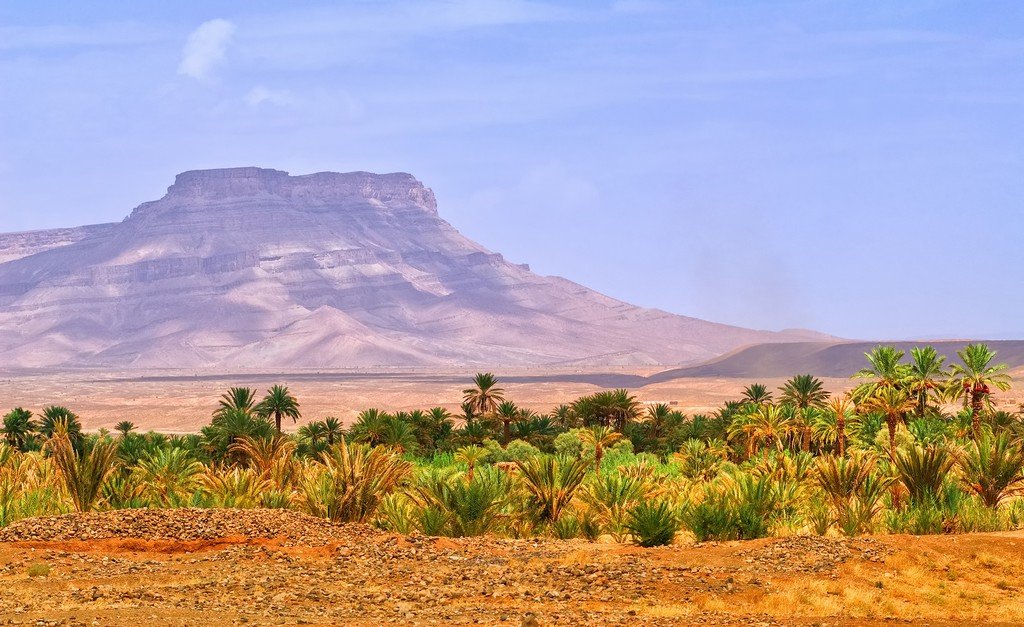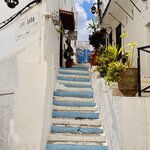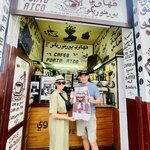Highlights
- Wander the maze-like streets of medieval Fes
- Walk through the ruins of the Roman Empire at Volubilis
- Ride a camel into the Sahara and stay the night in a Bedouin-style tent
- Explore old fortified kasbahs and palm oases in Morocco's desert
- Sip mint tea as you watch acrobats and snake charmers in Marrakesh
Brief Itinerary
| Day | Highlights | Overnight |
|---|---|---|
| Day 1 | Arrive in Casablanca, Explore | Casablanca |
| Day 2 | Transfer to Fes via Volubilis & Meknes | Fes |
| Day 3 | Explore the Medieval Medina of Fes | Fes |
| Day 4 | Transfer to Merzouga & Erg Chebbi, Overnight at a Desert Camp | Merzouga |
| Day 5 | Transfer to Ouarzazate via Desert Towns & Oases | Ouarzazate |
| Day 6 | Transfer to Marrakesh via Aït Benhaddou & Tizi n'Tichka Pass | Marrakesh |
| Day 7 | Marrakesh: Explore the Red City & Depart |
Detailed Itinerary
Day 1: Arrive in Casablanca, Explore
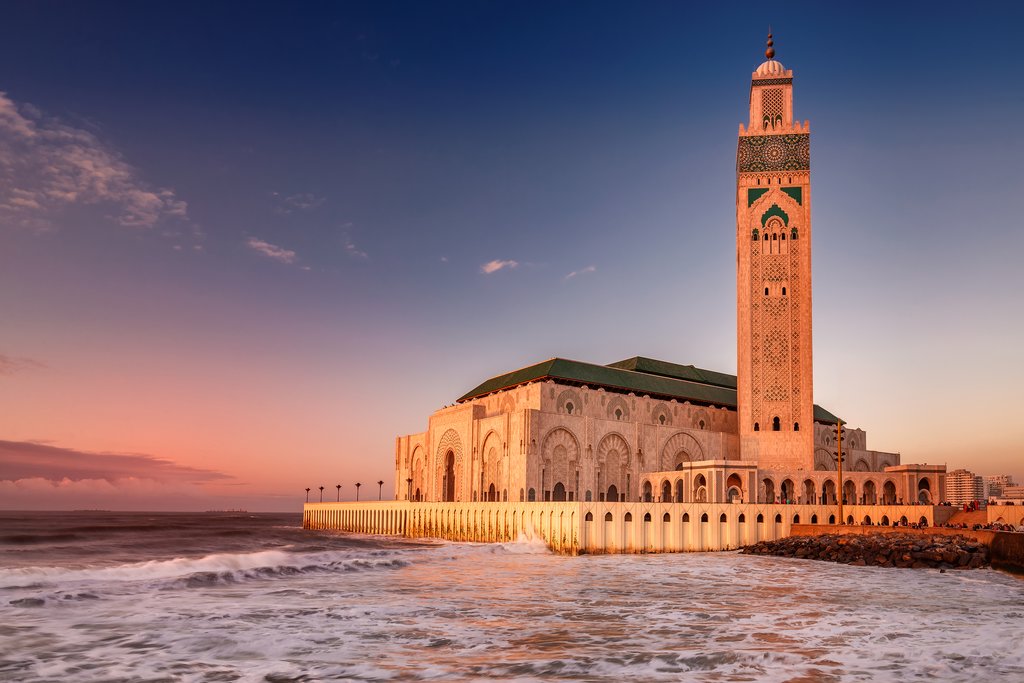
Welcome to the western coast of Morocco! Arrive in Casablanca and transfer to your accommodation. Depending on your flight details, you may have time to explore your surroundings. Take a stroll along the Boulevard de la Corniche, the beach promenade that follows the Atlantic coast and is sometimes referred to as Morocco's Miami. Grab a bite in Rick's Café, a restaurant, bar, and café designed to recreate the bar made famous in the movie "Casablanca."
Day 2: Transfer to Fes via Volubilis & Meknes

Casablanca is a modern, commercial capital of Morocco and is home to the Hassan II Mosque. It sits on an outcrop over the Atlantic Ocean and has a 690-foot (210 m) minaret—the tallest structure in Morocco and the tallest minaret in the world! It's estimated the courtyard can hold 80,000 worshipers, with room for 25,000 inside. What makes this mosque is that it's one of the few mosques in the country that non-Muslims can enter. Join a morning tour and be awestruck with the exquisitely ornate artisanship: hand-carved stone and wood, intricate marble floor detailing, and gilded cedar ceilings.
Continue to Meknes to explore the Ville Impériale (imperial city). Roam gardens and palaces, the impressive gate of Bab al-Mansour, and the Mausoleum of Moulay Ismail. Visit the nearby Roman ruins of Volubilis, a UNESCO World Heritage site, and a sprawling complex worth wandering. Marvel at the merchant homes, temples, and colorful mosaics in situ, including the Labors of Hercules. Carry on to Fes and navigate its impressively large and complicated medina that stretches down a hillside. Before venturing into the medina (old quarter), take a moment and visit the ruins of the Merenid Tombs to enjoy a panoramic view of the old city. Spend the night in a beautiful riad in the old town where you can enjoy the local specialties.
Day 3: Explore the Medieval Medina of Fes

Fes is the oldest of the four imperial cities (Rabat and Marrakesh are the remaining two) in Morocco and perhaps the most interesting and exciting to explore. It has the most complete medina in the Arab world and is relatively untouched since it was founded over 1000 years ago. Often considered the country's cultural capital, it's made up of three parts: two medina quarters, Fes el Bali and Fes el Jdid, and the modern Ville Nouvelle constructed during the French colonial era (1912-1956). Meet your guide and spend a half day learning about the history and culture as you navigate the winding, narrow streets of the medinas.
Browse the many souks (markets) offering local goods and watch the artisans at work. Visit the 11th-century Chouara Tannery and find a nearby leather shop for an encompassing overview. Visit the Al-Qarawiyyin Mosque and catch a glimpse of the beautifully decorated interior. Its university is the oldest still operating university in the world! Immerse yourself in the Al Attarine Madrasa and marvel at the detailed zellij tilework and woodwork. Head to 13th century Fes el Jdid to check out the Mellah (old Jewish quarter and cemetery) and take advantage of its location for a panoramic photo of the city.
Chat with a local specialist who can help organize your trip.
Day 4: Transfer to Merzouga & Erg Chebbi, Overnight at a Desert Camp

Start the day early and ascend 7,146 feet (2,178 m) up and over the Col du Zad pass and through the cedar forests of the Middle Atlas mountains. Keep an eye out for the many Barbary macaque monkeys in the trees and along the road. Stop in Midelt (the 'apple city') for lunch and enjoy the nearby Moulouya River, which provides the necessary environment for the orchards to thrive in the desert. Continue over the Tizi n'Talremt pass and into the Ziz Valley, known for its hidden oases and clusters of palm trees. Along the road, you'll see many fortified houses known as ksars. Merchants built them to protect precious wares, including gold, salt, and spices.
Just before reaching the town of Erfoud, you'll begin to see early signs of the Sahara sand dunes. Never stationary, the enormous dunes shift and travel depending on the wind's speed and direction. Stop in the market town of Erfoud, known for its date festival and fossil mining. Visit a craft workshop to learn how the fossil-rich rocks are carefully and skilfully transformed into both practical and decorative objects. Continue on toward the sea of sand dunes of Erg Chebbi. Covering an area of 13.5 square miles (35 square km), some dunes of Erg Chebbi rise to over 656.2 feet (200 m), their richness in color changing with the moving sun.
Outside of Merzouga, stretch your legs and climb atop your very own camel and ride through the dunes to your camp in time to climb a nearby sand dune to watch the setting sun. Return to camp for dinner and a relaxing night by the campfire, enjoying traditional Berber music with a twinkling night sky as your backdrop.
Day 5: Transfer to Ouarzazate via Desert Towns & Oases

Be sure to rise early to witness a Saharan sunrise before exploring more of the Desert. Rent a sandboard and test your skills on the dunes, join the Erg Chebbi tour (around the sand dunes) or a quad ATV tour, or simply relax by a pool. Continue to nearby Khemliya to wander this traditional Saharan village and enjoy drumming music and dancing. Make your way west, entering through an impressive gate into the market town of Rissani. Check out the livestock auction and the "donkey parking lot." From there, pass through the desert town of Tinghir and enjoy the views of neighboring towns running along the sides of the lush and extensive river oasis. Admire the 984-foot (300 m) deep Todra Gorge and the Todra River below that cut through the red limestone to make it. Take a leisurely walk to explore the gorge and relax in the cool water of the shallow river below.
Journey through the Valley of a Thousand Kasbahs. In between the small towns and kasbahs of this area, you'll see a variety of farming activities, with many farms still using traditional methods. You're also likely to encounter nomads herding their sheep, goats, and camels. Continue west to Boumalne Dades until you reach Kelâat M'Gouna. Here, the intensely cultivated plots of farmland are bordered by rose bushes, which are used in the cosmetic industry to make rose water and rose oil. Continue west to the popular desert hub and filming location, Ouarzazate. Join an optional studio tour and learn how the nearby regions have been featured in many films portraying desert landscapes like "Game of Thrones," "Gladiator," and "American Sniper." To learn more about the history and filmmaking process in the area, stop at the Musée du Cinema.
Day 6: Transfer to Marrakesh via Aït Benhaddou & Tizi n'Tichka Pass

Leave Ouarzazate behind and travel to Morocco's most well-known kasbah, Aït Benhaddou. A UNESCO World Heritage site, Aït Benhaddou is believed to date from the 11th century, during a time when it held an important position along the trans-Saharan trade route between Marrakesh, Ouarzazate, and the southern desert. Follow the narrow streets up to the Granary for a view of the surrounding landscapes.
From there, head up and over the High Atlas mountain range and look out for the highest peak, Mount Toubkal (13,671 feet or 4,167 m). Stop near the top of the Tizi n'Tichka Pass (7,415 feet or 2,260 m) to enjoy great panoramic views over the mountain range, as well as the snaking road below.
Stop in Taddert to discover (and sample!) how olives are processed at the Argan Oil Cooperative. Descend the north-facing slopes of the High Atlas and notice the dramatic change in climate and landscape. After all the tranquillity of the mountains and the desert, soon you'll be amid the hustle and bustle of vibrant Marrakesh. Upon arriving in Marrakesh, settle into your accommodation and take the rest of the afternoon at a slower pace. In the early evening, the main square, Jemaa el-Fna Square, comes alive with musicians, performers, snake charmers, games, and food stalls. Wander the square at your leisure and have a bite and a glass of fresh mint tea in one of the many cafés that sit above the square and enjoy the spectacle below.
Day 7: Marrakech: Explore the Red City & Depart
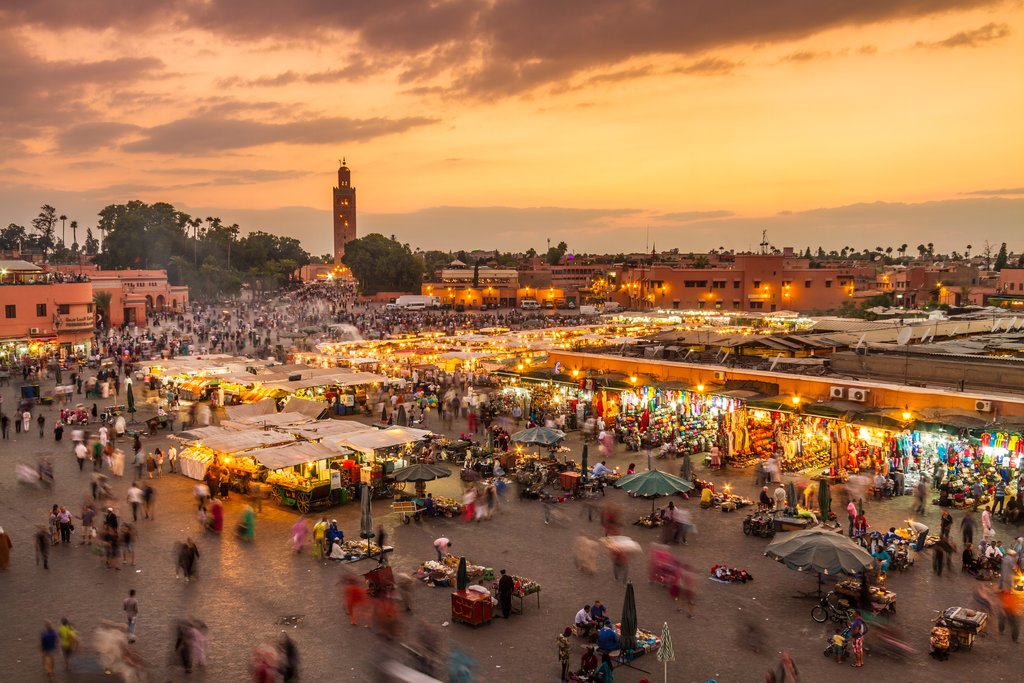
Marrakesh, nicknamed the "Red City," is a major economic center and home to a thriving medina. It has always been a lively city filled with foreign sights, sounds, and smells. Meet your guide for a half-day tour of the medina and discover its rich history and culture. Start your day west of Jemaa el-Fna and walk toward the striking minaret of the Koutoubia Mosque and Gardens. The 253-foot (77 m) high minaret is the tallest tower built in Marrakesh. Indulge your senses and explore the stalls in Souk el-Attarin (Spices), Souk Haddadine (blacksmiths), and Souk Smata (slippers). Next, visit the Islamic school, Ben Youssef Madrasa, for a taste of 16th-century architecture and marvel at the exquisite details: arabesques, Islamic calligraphy, and colorful geometric tile work.
As you walk Marrakesh's alleys, notice the Fondouks or Caravanserai—medieval traveler inns along ancient trade routes that provided travelers and traders with shelter and supplies. Today, some have been converted into residential properties, while others are large shopping areas and workshops that you can explore. Depending on your energy level, you may wish to visit a few sites south of Jemaa el-Fna. Some options to consider are the 500-year-old Saadian Tombs, the extensive courtyard and sunken gardens of the 17th-century El Badi Palace, or the intricate woodwork and painted ceilings of the 19th-century Bahia Palace. Or, if you prefer a quiet respite from the afternoon heat to end your trip, you may wish to check out Majorelle Gardens and relax amid sub-tropical plants, bamboo, lilies, and palms.
More Great Morocco Itineraries
Looking for more inspiration for your trip to Morocco? Check out these other Morocco itineraries, explore different ways to spend one week in Morocco, or discover the best time to visit Morocco.
